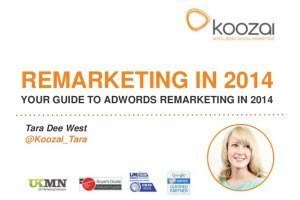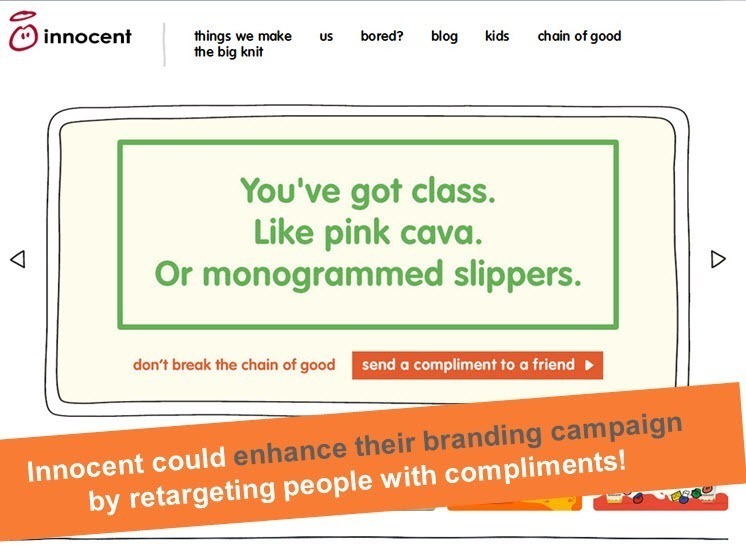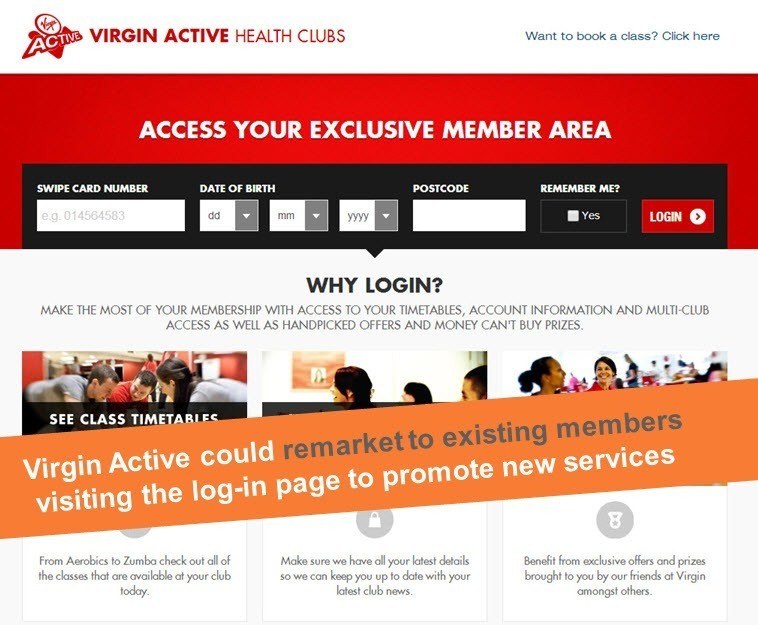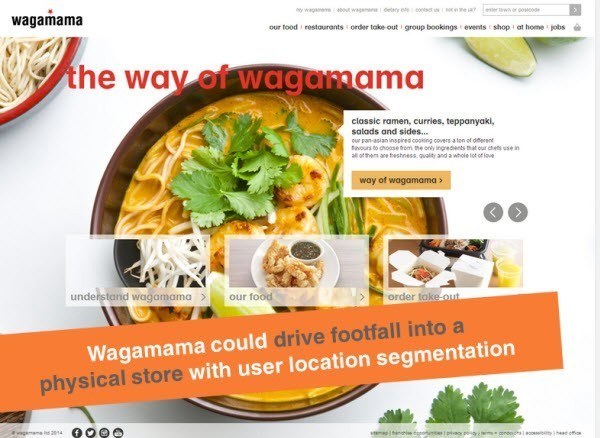 Today I presented at On The Edge Bristol on the subject of Remarketing in 2014. A lot has changed with AdWords in recent years, especially the moving focus away from keywords and towards marketing to specific people and audiences. Below I’ve compiled all you need to know to get started with Remarketing and why it’s a key part of any paid search strategy.
Today I presented at On The Edge Bristol on the subject of Remarketing in 2014. A lot has changed with AdWords in recent years, especially the moving focus away from keywords and towards marketing to specific people and audiences. Below I’ve compiled all you need to know to get started with Remarketing and why it’s a key part of any paid search strategy.
First of all I’ve included the slides, and below you’ll find a breakdown of everything in them:
The Paid Search Landscape is Changing
The paid search landscape is constantly changing, and whilst paid search targeting used to be all about keywords, it is fast becoming more about targeting people by their behaviour and characteristics. Remarketing is one of the most popular examples of this behavioural paid search trend.
What is Remarketing?
For those of you who aren’t familiar with Remarketing, AdWords describes it as:
“Remarketing lets you show ads to users who have previously visited your website as they browse the web” (Source)
Does Remarketing work and what can it achieve?
Research from Criteo claims that Retargeted customers are 70% more likely to complete a purchase than someone who has not been remarketed to (Source). This shows how much Remarketing can influence and attribute to your conversions.
But it’s not just about conversions, Remarketing is an extremely cost effective way of building brand awareness. You can use AdWords Remarketing on a pay-per-click model, which means that you only pay when someone actually clicks your ad, and all the impressions your ad gathers are not chargeable. This is great news if your goal is branding, because the cost is low and the reach is huge!
Is Remarketing right for you?
As I explained above, Remarketing is perfect if your objective is branding or awareness, because you can achieve a large level of exposure at a very low cost.
If you have a particularly visual product, then Remarketing ads can display the visual appeal of your product in a way that text ads might not be able to. An example of this could be a holiday retailer.
If you are selling a high ticket item or a service where users have a long path to purchase and shop around lots, then Remarketing is great for staying in their minds during this process. An example of this could be a computer retailer.
When seasonal purchases are important to you, Remarketing can really help. For example a florist might Remarket around Mothers’ Day to users who made a purchase on Valentines’ Day because they may choose to use the same florist again.
For instances where repeat purchases are likely or important, Remarketing can help secure them. For example if you sell insurance you can Remarket to people around the time that their renewal is due.
How does AdWords Remarketing work?
Put simply, you put some really straight forward code on your site and it allows Google to drop a cookie onto the users’ browser and track them across the web, so that when they browse content that is part of the Google Display Network, your ads can be shown to them.
Isn’t remarketing annoying for users?
I’m sure you been in the situation:
You visited a retail site when you were looking for something but then decided to give it a bit more thought and didn’t purchase. Now the retailer is stalking you across the Internet on every website you seem to visit.
That is an example of Remarketing done badly.
When Remarketing is done well, it is subtle and effective without being intrusive.
The problem is that so many companies are doing it wrong that it is starting to put potential remarketers off.
There are functionalities like Frequency Capping, which allow you to control how often users see your ads, and this combined with a sound Remarketing strategy means you won’t be stalking your customers.
Don’t be put off by the experiences you’ve had with other companies Remarketing to you, because with the tips below you’re going to do it the right way!
How to persuade decision makers
It’s all very well having these great ideas on how you can use Remarketing, but you need to be able to persuade the person in charge of the purse strings that it is worth investing in.
- Find out if your competitors are doing it by going on their sites and then seeing if they Remarket to you – often knowing that competitors are doing it makes a strong case for at least trialling it within your organisation
- Try getting a small trial budget for Remarketing initially, so that you can prove the concept and show them the kind of results they could expect if they invest further
- Use the Time Lag Report in AdWords to see how long it takes on average for your visitors to complete a conversion after the first visit of your website – this data can help convince managers that Remarketing could reduce that time
Remarketing Strategies
Next let’s look at the ways other companies could be using Remarketing, to give you some ideas of handy Remarketing strategies that you may then be able to apply to your own company.
Dynamic Remarketing
Dynamic Remarketing is the latest progression in AdWords Remarketing for ecommerce websites. It allows the ads you show to dynamically pull in images of the products that the particular user has viewed on your website.
Other Remarketing platforms have had this ability for a while, but they usually had a large pre-defined ad spend and you had to work with a separate provider from AdWords.
Now AdWords allows you to take advantage of this functionality whatever your budget, as long as you have a Google Merchant Centre Product Feed. To use it you need to have tagged every page of your website with the AdWords remarketing tag (which can be used alongside the Analytics Remarketing tag).
Your ads are created by selecting templates supplied within the AdWords interface. You can customise the templates to include your logo and colour scheme, and then the product images are pulled in directly from your product feed.
Brand Enhancement
Remarketing can be used to further enhance any other branding activity you are doing on your website or even offline in print, radio or TV.
For example if you are using a specific piece of creative in a print ad and telling people to visit a URL on your website, you could Remarket to everyone who visits that URL. As they will be aware of the creative message already your Remarketing can work to enhance it.
A specific example could be Innocent’s recent campaign to ‘Start a Chain of Good’ where users are encouraged to start a chain of good by sending funny compliments to their friends online. Innocent could use Remarketing to greet their users with compliments from them.

Remarket to Existing Customers
Don’t forget about your existing customers within your Remarketing strategies. For example Virgin Active gyms could Remarket to users who log into their Exclusive members area.

Drive Footfall into Physical Stores
Wagamama’s could increase footfall into a physical store by using user location segmentation which is available as long as you have the Google Analytics Remarketing tag. You can set up Remarketing lists based on any standard user segments in Google Analytics.

Segment by Device to Promote your App
If you have an app you could create a Remarketing list to target users who have visited your site from a mobile device and then promote your app to them. You can even define this right down to whether they are using iOS or Android and tailor your ad copy to suit. Because you want to only target users on mobile devices I would recommend setting your standard bids really low on this campaign or ad group and then using mobile bid adjustments to bid up high for mobile devices. Unfortunately there is currently no way to completely exclude desktop devices.
Target Affinity Categories
Affinity Categories aren’t actually a type of Remarketing, but they are a type of behavioural targeting that is new to AdWords so I thought I’d share it with you. This is a way of targeting your adverts to audiences that Google have deemed to have particular interests based on their browsing history. These users do not necessarily have to have already visited your website.
For example Subway could target by Affinity Categories for ‘health’ if they launch a new healthy sub.
Target In-Market Buyers
In market buyers are similar to Affinity categories because they do not necessarily have to have visited your website.
They are an audience who Google believe to be close to making a purchase or conversion based on their browsing behaviour. For example if they keep repeatedly visiting similar products on a variety of websites in a small period of time, it is likely they are close to purchase but making a few last minute comparisons.
You can choose to target these users with display ads as they browse the web.
For example Boots could target In-market buyers for the category ‘ Beauty’.
Drive Traffic to your Facebook Page with Remarketing
You can set up a Remarketing campaign to drive traffic to a Facebook page by having ads encouraging users who have visited your site to ‘Like’ the page in exchange for a discount or offer.
Engage with your Facebook fans by Remarketing to them with exclusive news or discounts by putting the Google Analytics Remarketing code within your custom Facebook skin. You must set up a separate Google Analytics profile if you do this, to ensure the code on your FB page doesn’t artificially inflate page views by counting Facebook page views as page views on your website.
You can also Remarket directly within Facebook and show ads to your website visitors when they are on Facebook, using a platform called AdRoll, which is a handy platform if you have a smaller ad spend.
Remarket to your YouTube Audience
Your YouTube channel has Remarketing code already pre-built into it, which means Remarketing to your YouTube audience is really easy to set up! Thanks to this you can Remarket to people who have viewed your videos, liked them or even subscribed to your channel.
For example B&Q produce some handy ‘how to videos’ on their YouTube channel. If they had a video about how to put up a shelf, they could Remarket to everyone who watched the video with a Remarketing ad promoting their shelf brackets.
Google Defined Best Users
The Google Defined Best Users option is currently in beta but almost everyone has access to it within their Google Analytics account when they follow the steps to set up a Remarketing list.
Google Defined Best Users is a bit of a mystical Remarketing audience that Google say is comprised of your ‘best’ users. They are a bit unclear in telling us exactly what they mean by best users, but from my experience in trialling this feature it seems to be those who are close to purchase or a repeat purchase.
Similar to the In-Market buyers segments, Google can review a users behaviour on your website and tell if they are close to purchase and are valuable to you. These users are then added to the Google Defined Best Users List so that you can Remarket to them.
Because there is no way of knowing what Google Defined Best Users have actually viewed on your site, I recommend using a generic branded ad for this list rather than any specific product or service related ad.
Remarketing Lists for Search Ads (RLSAs)
Google defines RLSAs as:
“Remarketing lists for search ads provides yet another opportunity to optimize your search campaigns by letting you tailor your keyword bids and ad text for your highest value prospects — people who have visited your website in the past — when they’re searching for what you sell.” (Source)
They allow us to apply a layer of contextual behavioural targeting to our standard search campaigns, or they can be applied to campaigns of their own.
RLSAs:
- Must use the AdWords Remarketing tag not the Analytics tag
- Allow you to make bid adjustments on particular Remarketing audiences
- Allow you to bid solely on particular Remarketing audiences in their own campaign
- Allow you to bid on more generic keywords than you might otherwise bid on, because you know the user has already visited your site and has the relevant interest in your products / services
- Allow you to tailor your text ads to suit a message for users who are further down the purchase funnel (for example including offers or stating you have a free returns policy)
- Allow you to exclude existing visitors from your brand campaigns so that they only bring in new traffic
You can learn more about RLSAs in detail here.
How to Make Your Remarketing Campaigns Happen
The first thing you need to do is update your Privacy Policy to state that you are using DoubleClick cookies for Remarketing. This is a legal requirement so make sure it is done before you start creating lists or anything else.
You can find out more about what you need to include in your Privacy Policy here.
Get the Code from Google Analytics
Go to the Admin panel in your Google Analytics account and ensure the button which says ‘Display Advertiser Support’ is on. Then update your existing Google Analytics code with this new code, by pasting it just before the closing </head> tag.
You’re now ready to start creating lists!
Creating Remarketing Lists
When creating your Remarketing lists remember the following:
- You can create them in the Admin Panel of Google Analytics under the Remarketing section
- Consider your list membership duration so that your members aren’t being followed around with your ads for too long
- Name lists descriptively so you can remember what they are and easily use them again in future
- Lists need to gain at least 100 members for display Remarketing and 1000 for RLSAs, so set them up as soon as possible and start building
Learn more about them here.
Campaign Creation and Settings
Here are my top tips for creating Remarketing campaigns and settings which are important to them:
- Put GDN Remarketing campaigns in their own campaign so you have control over budget and performance
- Create one campaign per strategy, or at least one ad group per strategy
- Set your frequency capping at a maximum of 3 impressions per day at campaign level (make it lower if you have more campaigns)
- Exclude inappropriate categories such as ‘Death & Tragedy’ which you wouldn’t want your brand associated with
- Choose ‘Above the Fold’ so you can ensure your ads are more likely to be seen
- Set bids at ad group level so you have more granular control over them
Creating Ads for Remarketing
When you create your display ads for Remarketing try the following:
- Include one of each ad size in every ad group, because not all websites will accept all ad sizes, so by including one of each you have a better chance of being shown
- Use the same creative theme for your ads as you have on your website so users can easily associate your ads with your site
- Include your logo in your ads to further tie your ads and website together in the users mind
- Make your ads specific to that ad group or campaign strategy, for example if the list is targeting viewers of a particular product page, then your ads should be related to that product and include images of if
Analysis and Evaluation
Remarketing is a form of display advertising so although it isn’t always the last attributed source for conversions, it does contribute to conversions by influencing the user at some point during their journey to purchase. This influence and partial attribution is currently best tracked in the form of View through Conversions.
View through Conversions occur when a user has been exposed to an ad at some point on their journey to purchase, but they did not directly click that ad and then instantly make a purchase.
When you evaluate your Remarketing campaigns make sure you add in the column in AdWords for ‘View through Conversions’ as well as normal (‘last click attribution’) conversions.
Optimising your Remarketing Campaigns
I have kept this section brief because in an ideal world you will have an agency or specialist optimising your campaigns (such as we do at Koozai), but I wanted to give you my top six basic tips for Remarketing optimisation:
- Review frequency capping using Dimensions tab data so you can see which frequency of exposure people respond best to
- Split test ad creative by trying different calls to action or different colour buttons
- Monitor Lost Impression Share Due to Rank because if you are losing this your ads aren’t showing at every opportunity they could be, because either your bids aren’t high enough or your ads don’t have a good Quality Score
- Review the Placement Report and exclude any inappropriate sites that you do not want to be associated with your brand and ads
- Try adapting lists so that you can add more criteria to them, for example if you have a list that targets all users who viewed your site but didn’t convert, you could add a further layer to the list by excluding all visitors who spent less than two seconds on your website
- Split out top performing lists into new campaigns if they are performing particularly well and generating a high level of view through conversions
I hope that helps. I’ve also written a whitepaper which guides you though setting up Remarketing, creating strategies and optimising it and you can download it for free here.
If you’d like to learn more about our PPC services please get in touch or ask any questions below.
Leave a Reply